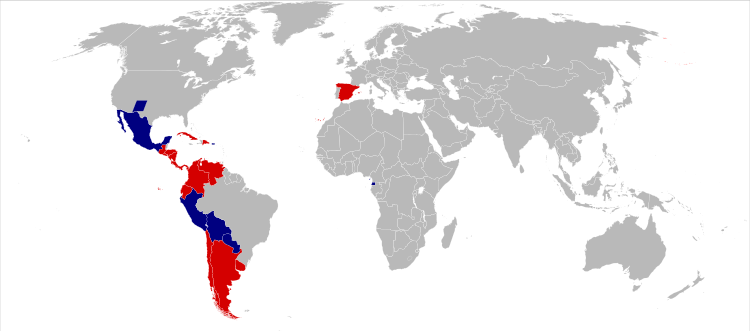Panhispanism
Panhispanism is a political trend aimed to achieve social, economic, and political cooperation (at the extreme, unification) of the Spanish-speaking countries, principally those of Hispanic America, due to the distance between Spain, Western Sahara and Equatorial Guinea. It focuses principally on the former Spanish Empire's territories in North, Central and South America. It has been present consistently in literature, revolutionary movements, and political institutions. The term may be also used to talk specifically about projects of Hispanic American unity held by Simón Bolívar and José de San Martín.
|
|
 |
| Spanish-speaking nations |
History
The Spanish colonization of America began in 1492 and ultimately was part of a larger historical process of world colonialism through which various European powers incorporated a considerable amount of territory and peoples in the Americas, in Asia, and in Africa between the 15th and the 20th centuries. Hispanic America became the main part of the vast Spanish Empire.
Due to Napoleon's takeover of Spain in 1808 and the consequent chaos initiated the dismemberment of the Spanish Empire as American territories began their struggle for emancipation, the only remaining Spanish American territories were Cuba and Puerto Rico by 1830[1] (and in the Pacific Ocean the Philippines, the Carolines, the Marianas and Palau) until the 1898 Spanish–American War.
See also
- Hispanic America
- Association of Spanish Language Academies
- Spanish American wars of independence
- Hispanidad
- Patria Grande
- La Raza
- Pan-Latinism
- Pan-nationalism
- Mediterraneanism
- Iberian federalism
References
- Hall, D. (1987). The Caribbean experience: An historical survey 1450-1960. Kingston: Heinemann educational Books.
Further reading
- Aken, Mark J. van. Pan-Hispanism: Its Origin and Development to 1866. Berkeley and Los Angeles: University of California Press 1959.
